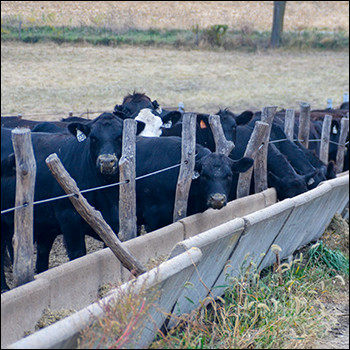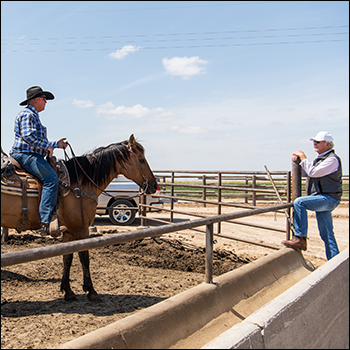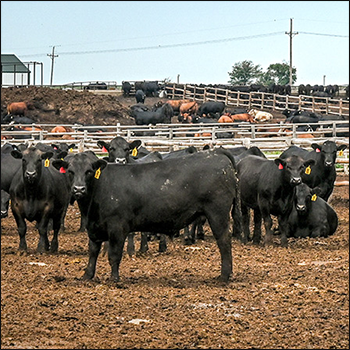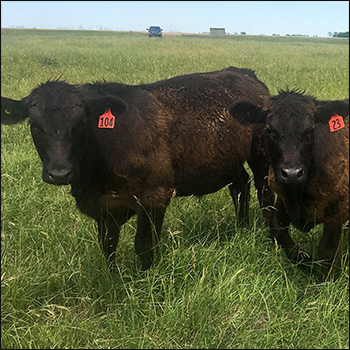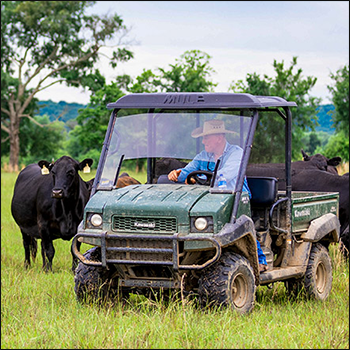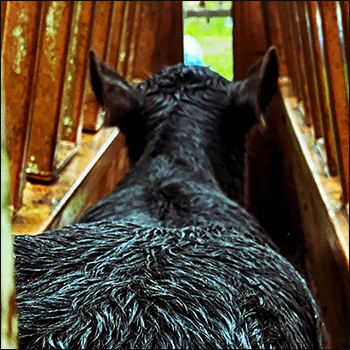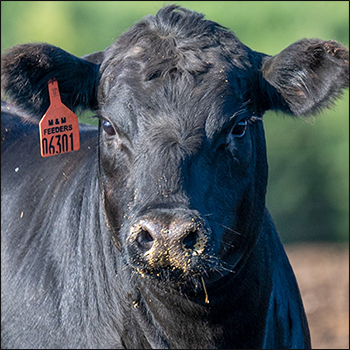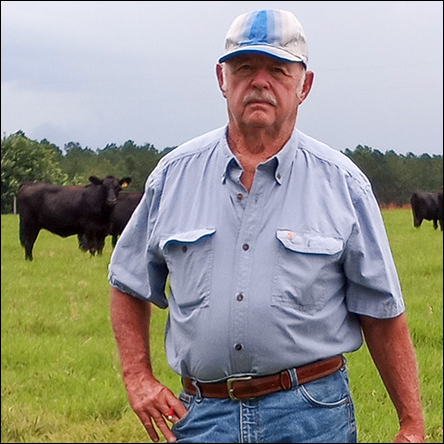Balancing Omegas
Research shows balancing fatty-acid profile creates efficiency in animal performance, increased health for humans.

One of the drawbacks of traditional feedlot rations is that they are high in omega-6 fatty acids, which are not as healthful as feeds containing a better balance of omega-6 and omega-3 fatty acids. Fifteen years of research is showing a more efficient feeding protocol that yields better animal performance and more nutritive meat products with higher levels of omega-3 fatty acids.
Research done by NBO3 Technologies in conjunction with Kansas State University has studied high-fat additives composed of flax, wheat midds and a patented algae product. The algae component has a direct form of eicosapentaenoic acid (EPA) and docosahexaenoic acid (DHA) — two polyunsaturated fatty acids that every animal, including humans, needs in the diet.
“Most of the time, however,” explains Chance Remington, regional representative for NBO3 Technologies, “the body has to change it into something it can utilize. The cow’s body must process food to pull out these fatty acids.”
The goal is to balance the ratio of omega-3 and omega-6 fatty acids in the cow’s body in an efficient form that is absorbed readily.
“We have studies showing we can actually do that. In turn, we see numerous benefits, including up to 70% reduction in use of antibiotics, a 15% to 30% increase in conception on first-time service in heifers, increased semen motility in bulls, and increased rate of gain,” Remington says.
The animal can also be marketed into an all-natural or non-hormone treated cattle (NHTC) program with this feed.
“This product has been tested since 2013 at Kansas State University and on various farms and this is the first year for public sales,” says Remington.
The recommended use rate is generally ½ to 1½ pounds per head per day, depending on size of the animal and goal for production.
“In early feed production two decades ago, no one was really balancing for amino acids, but almost everyone balances them today to obtain higher performance from livestock through a healthier diet,” says Kurt Dieker, chief development officer for NBO3 Technologies, who runs the algae farm that creates that component of their patented feed additive. “We believe that fatty-acid profile is just as important if not more important (because of the energy source) than amino acid balance, but most people just look at base energy and think calories are calories. Our research shows that the source of the calories can make a difference.”
The type of calories can affect the rumen, Dieker says, noting that when you feed the animal, you are actually feeding the rumen flora.
“A study at University of Nebraska–Lincoln (UNL) looked at distillers’ grains and corn oil. When we started extracting oil (an energy source) and using distillers’ grains, the first thought was that since we’re not getting as many calories, the distillers’ grains shouldn’t be worth as much. UNL did the first study that looked at full-fat distillers’ grain versus reduced-fat distillers’ grain, and found that cattle being fed reduced-fat distillers’ grains actually performed better, even though these were lower in calories.”
Studies found that the higher amount of fat was coating the rumen and hindering conversion.
“Just because you are giving the animals more calories doesn’t mean they can convert it to usable energy,” says Dieker. “We want to make sure we have a balance of what we are giving them, but when you have healthier animals, you also have higher-performing animals.”
“With calves, what we see at weaning or when they go to a feedlot is 50 to 80 pounds more per head, but I’m not sure this is the most efficient version of the feed system. I think we still might be overfeeding omega-3s to get there. The trials this year are cutting it down to see if we can do as well with less — using our more efficient converting feed product,” he explains.
Prior research has shown that conversion of alpha-linolenic acid (ALA) — what plant-based omega-3s are — and polyunsaturated fatty-acids is relatively inefficient, at only 10% biologically. By directly feeding the EPA in the algae, the animal doesn’t have to convert it at all, Dieker explains.
“We are seeing a higher conversion than normal (like 1 plus 1 equals 3); with whatever we feed, their natural conversion goes above and beyond what we feed. We are triggering the animal to recognize that this is good for health and stimulates it to convert more,” says Dieker.
“We are seeing a health benefit, fat conversion benefit and feed conversion efficiency. We also see a change in overall meat quality, based on fatty-acid profile. The grading of the beef we feed consistently through their lives and especially through the end of the feeding process increases,” he says.
Editor’s note: Heather Smith Thomas is a cattlewoman and freelance writer from Salmon, Idaho.
